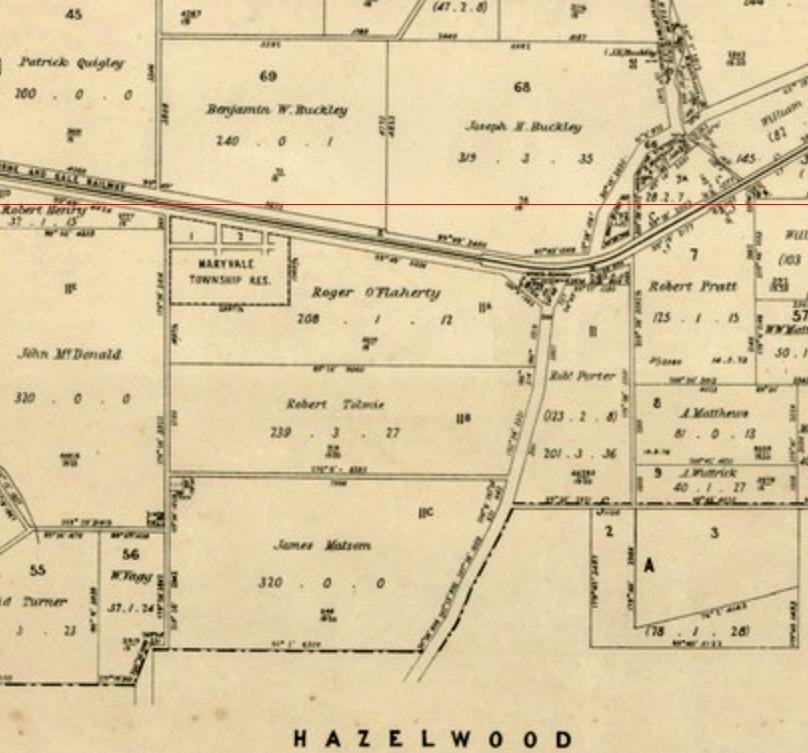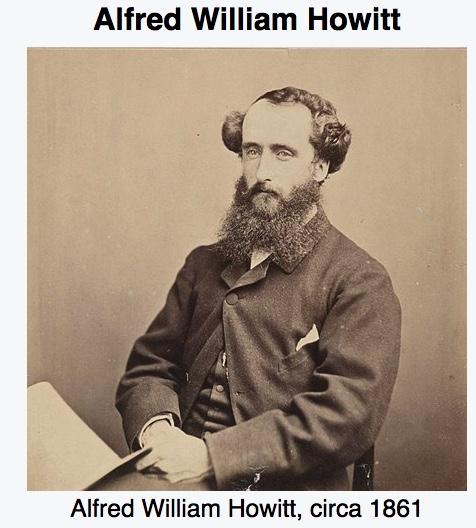Looking Back - May 2024 - Roger O’Flaherty
By Leo Billington
Parts of Morwell’s History unfortunately forgotten
In the April 2024 edition of CDNews, an early settler into Morwell, Roger O’Flaherty was introduced.
While our forefathers did not bother to acknowledge his name by way of a street, footy oval, local hall or whatever, it is important to raise his profile.
Briefly, Roger arrived in Morwell around 1878, shortly after initially settling in what we know as Morwell Bridge. Like others, he took advantage of land being available in what we might now call central Morwell. Research shows he was lucky when some of his land was obtained by State government acquisition to effectively set out the main streets bounded by Hazelwood Road, Commercial Road, White Street and McLean Street.
It is believed Roger was offered either £200 or 200 acres nearby for this area. He was not stupid - and grabbed the land option. He did remain in town, corner of George and Tarwin Streets (north west corner) and became known as a cattle dealer, albeit with some other business interests on the side.
His search for extra allotments and new business took him to Traralgon and subsequently to Western Australia.

Locally, Roger’s quest for more land, known then as Maryvale, east of Morwell was approved by granting of a licence on Monday February 18, 1878. Thereafter, he obtained a larger allotment to the south of town adjacent to Robert Tolmie. Early land maps show his selection then extended east of the town to Tramway Road.
Around early 1884, he applied at auction for land licenses in and around the Traralgon settlement. Not long after, an allegation was made that he agreed to being granted some licenses, but that he was reneging on making any payment. In October 1886, he was called before the court to answer the charge.
Roger apparently was not to be outdone. Quickly, he replied, “I have no recollection of anything that took place there.” He was subsequently accused of being drunk, to which Roger replied, “when I have had some drink, and my head is wrong, I talk like a lawyer.”
Any transaction that might have occurred at the auction was repudiated. But Roger had the last say.
“My general experience has been that when the wine is in, the wit is out, and that a man in a state of beer more frequently talks like a fool than like a counsellor.” Case dismissed!
Roger found himself in the Sale County Court on Friday, March 14, 1884 (Gippsland Mercury, March 15, 1884) accused of illegally obtaining a bullock from a herd that had been sold to another farmer. Although the animal was branded correctly, Roger challenged the charge. Calling the case “the wrongful conversion of a bullock”, the magistrate gave a verdict for the plaintiff and Roger was fined £7.00 for costs.

In September 1888, Roger found himself before the Morwell Police Courts - arguing with stipendiary magistrate Alfred William Howitt - over some pigs which belonged to another resident. Each combatant was fined nine shillings.
He had some luck in court with Mr Butters in April 1890 over goods worth about £4, not being delivered. The case was adjourned because Magistrate Mr Bell had to catch a train back to Melbourne.
At the corner of Commercial and Hazelwood Roads, was the Cricketers Arms Hotel, today’s Latrobe Regional Gallery site. The first licensee was John Collier. Then it was William Murdoch, then Roger O’Flaherty and then Henry Breed from Traralgon. Murdock moved along further with a new hotel in Commercial Road. A short distance along Edmond Kelleher built his new hotel - later to be known as The Club Hotel.
Being an “entrepreneurial neighbour” alongside Murdock and Kelleher, but not necessarily friends, Roger was keen to stamp his ground. He and Kelleher found themselves in front of a magistrate regarding damages to property and assaulting each other. Both were fined, mainly because it was difficult to determine who was right and who was wrong.
It was Roger’s relationship with John Keogh (farmer from Boolarra) that seemed to generate plenty of local editorial. John, who himself had faced charges relating to cattle stealing, did not enjoy Roger’s company, and the feeling was apparently mutual.
In early 1893, both men were charged with assaulting each other. Evidence given showed that each other was to blame after provoking each other at a Yinnar Race meeting. It was easy for their case to be dismissed.
Whenever these two gentlemen were engaged in conflict, mainly verbal, on one occasion, Mr Howitt S M, was at his wits end suggesting “Such cases as these lower the tone of the district. It is a pity men cannot meet over a social glass.”
Roger’s wife, Julia, and four children seemed to have followed him to Subiaco in Western Australia. It was here he met an untimely death in 1897, when hit by the Perth - Fremantle train as it left its’ platform.
Roger was beginning a new life with employment on the Harbour Trust Works. His obituary (Morwell Advertiser, Friday May 21, 1897), suggested he was a butcher at Subiaco. His Morwell mates suggested he was a butcher in Fremantle. Another obituary in the Western Mail Perth, Friday, September 10 1897, listed him as a labourer.
On occasions, Julia did return to Morwell, mainly to “tie up some loose ends.” Cattle and a 180 acre farm were sold early in 1895. Roger’s departure was planned as he auctioned his “horses and 200 building allotments” late in 1885. It is recorded he was a passenger on the British India Company's steamer S S Bulimba when it berthed at Fremantle in early 1896.
Similar to other well-known early settlers, some of whom are memorialised in street names or similar, Roger O’Flaherty was a colourful character keen to expand his entrepreneurial ambitions. His 18 or so years in Morwell, mirrored others also keen to make a new life.


